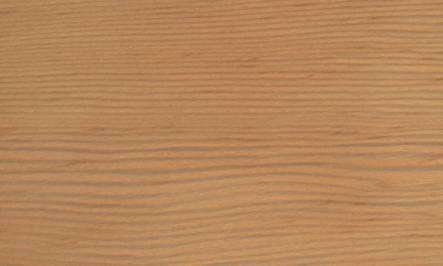 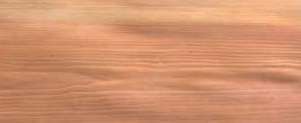 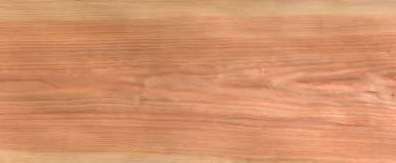 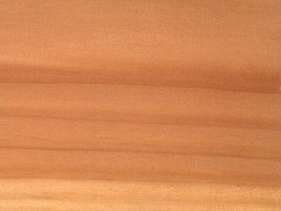 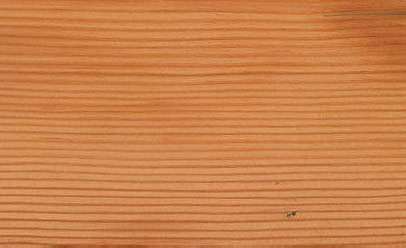 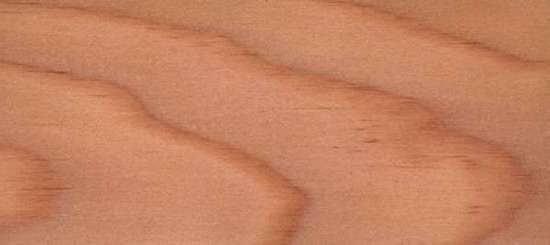
Douglas-fir (Pseudotsuga menziesii)
Family: Pinaceae
Common names: Blue Douglas-fir, British Columbia pine, British Columbian pine, Coast Douglas-fir, Colorado Douglas-fir, Colorado pino real, Colorado real, Columbian Pine, Douglas fir, Douglas spruce, Douglas-fir, Douglas-fir (Coast), Inland Douglas-fir, Interior Douglas-fir, Oregon Douglas-fir, Oregon pine, Puget Sound pine, Red fir, Rocky Mountain Douglas-fir, Yellow fir
Distributed in: Canada, Mexico, United States (Central America, North America)
Distribution overview: The growth range of Douglas fir includes Alberta, British Columbia, Arizona, California, Colorado, Idaho, Minnesota, Montana, New Mexico, Nevada, New York, Oregon, Texas, Utah, Washington, and Wyoming. Coast Douglas-fir occurs in pure stands of vast forests on moist, well drained soils. Rocky Mountain Douglas-fir may occur in pure stands or mixed coniferous forests, and thrive mainly on rocky soils of mountain slopes. Douglas-fir has also been introduced to other regions in the world, including Great Britain, Ireland, France, Belgium, Germany, New Zealand, and Australia as a source of timber.
Common uses: Agricultural implements, Beams, Boat building (general), Boat building: decking, Boat building: framing, Boat building: masts, Boxes and crates, Bridge construction, Building construction, Building materials, Cabin construction, Cabinetmaking, Casks, Concrete formwork, Construction, Cooperages, Core Stock, Decorative veneer, Domestic flooring, Factory construction, Factory flooring, Figured veneer, Flooring, Form work, Foundation posts, Framing, Furniture, Heavy construction, Interior construction, Interior trim, Joinery (external): ground contact, Joinery, Joists, Ladders, Light construction, Lock gates, Marine construction, Millwork, Mine timbers, Packing cases, Paneling, Parquet flooring, Pile-driver cushions, Piling, Plain veneer, Plywood, Poles, Porch columns, Posts, Pulp/Paper products, Railroad cars, Railroad ties, Rough construction, Sporting Goods, Structural plywood, Structural work, Studs, Sub-flooring, Utility crossarms, Utility plywood, Vats, Vehicle parts, Veneer, Warehouse construction, Wharf construction
Product sources: Supplies of Douglas-fir are adequate since the species grows rapidly, and its growth range extends over a wide area in North America. It is usually priced in the medium to lower range. Remarkably knot-free, strong, and light, Douglas-fir is considered to be one of the best known softwood timbers.
Environment profile: Widespread, abundant, and globally secure
Tree size: Trunk diameter is 150-200 cm
Colors: the heart isYellow, Yellow to golden-yellow to orangeand the sapwoodWhite to yellow, Yellow.The grain isWavy, the textureUniformand the lusterMedium
Natural durability: Very durable, Very little natural resistance
Odor: No distinctive taste
Kiln Schedules: UK=K US=T13C4S/T11D3S
Kiln Drying Rate: Very slow
Drying Defects: Slight twist/warp, Splitting
Ease of Drying: Variable
Tree Identification: Bole/stem form is straight
Comments: Douglas-Fir is reported to produce the most, in total volume, of timber, lumber, and plywood for veneerGeneral finishing qualities are rated as good Generally stron and hard Lumber from old trees is valuable because it is free of knots
Blunting Effect: Moderate
Boring: Very good results
Carving: Fairly Easy to Very Easy
Cutting Resistance: Level of difficulty depends on percentage of latewood
Gluing: Very good properties
Mortising: Moderately easy to mortise
Moulding: Moulding ease is moderate
Movement in Service: Moulding ease is moderate
Nailing: Pre-Boring Recommended, Very Good to Excellent
Planing: Very Good to Excellent
Resistance to Abrasion: Peel and slice easily because they are typically well-formed and not very hard
Resistance to Impregnation: Sapwood is resistant
Resistance to Splitting: Satisfactory
Response to hand tools: Variable qualities
Routing recessing: Fairly Easy to Very Easy
Sanding: Very Good to Excellent Results
Veneering qualities: Veneers easily, Veneers moderately easy
Steam bending: Moderate
Screwing: Screws hold very well, Very Good to Excellent Results; Turning: Very good
Painting: Satisfactory; Polishing: Satisfactory; Staining: Very Good to Excellent; Varnishing: Satisfactory;
- Numerical data Metric
- Numerical data English
- Strength properties
- References
 |
 |
 |
 |
| Item |
Green |
Dry |
Metric |
| Specific Gravity |
0,43 |
0,47 |
|
| Density |
|
528 |
kg/m3 |
| Bending Strength |
531 |
860 |
kg/cm2 |
| Crushing Strength |
31 |
61 |
kg/cm2 |
| Hardness |
|
279 |
kg |
| Impact Strength |
63 |
91 |
cm |
| Shearing Strength |
|
82 |
kg/cm2 |
| Stiffness |
109 |
134 |
1000 kg/cm2 |
| Tangential Shrinkage |
7 |
|
% |
| Radial Shrinkage |
4 |
|
% |
| Weight |
528 |
496 |
kg/m3 |
| Maximum Load |
0,42 |
0,63 |
cm-kg/cm3 |
| Toughness |
|
195 |
cm-kg |
| Static Bending |
321 |
592 |
kg/cm2 |
|
 |  |  |  | | Item | Green | Dry | English | | Bending Strength | 7558 | 12238 | psi | | Crushing Strength | 446 | 872 | psi | | Density | | 33 | lbs/ft3 | | Hardness | | 616 | lbs | | Impact Strength | 25 | 36 | inches | | Maximum Crushing Strength | 3906 | 6951 | psi | | Shearing Strength | | 1172 | psi | | Static Bending | 4572 | 8428 | psi | | Stiffness | 1554 | 1917 | 1000 psi | | Toughness | | 170 | inch-lbs | | Work to Maximum Load | 6 | 9 | inch-lbs/in3 | | Specific Gravity | 0.43 | 0.47 | | | Weight | 33 | 31 | lbs/ft3 | | Radial Shrinkage | 4 | | % | | Tangential Shrinkage | 7 | | % | | Volumetric Shrinkage | 12 | | % | |
Density (dry weight) = 31-37 lbs/cu. ft. 0
Max. crushing strength = medium 0
Hardness (side grain) = very soft 1
Bending strength (MOR) = low
Modulus of Elasticity (stiffness) = medium
Bending strength (MOR) = medium
Shearing strength (parallel to grain) = very low
Shearing strength (parallel to grain) = low
Max. crushing strength (stiffness) = very low
Toughness-Hammer drop (Impact Strength) = low
Shrinkage, Tangential = moderate
Hardness (side grain) = soft
Density (dry weight) = 38-45 lbs/cu. ft.
Shrinkage, Radial = very small
Shrinkage, Radial = moderate
Modulus of Elasticity (stiffness) = very low
Toughness-Hammer drop (Impact Strength) = medium
Toughness (total work) = low
Shrinkage, Tangential = very small
Shrinkage, Tangential = small
Shrinkage, Radial = fairly large
Modulus of Elasticity (stiffness) = low
Modulus of Elasticity (stiffness) = high
Max. crushing strength = low
Density (dry weight) = 15-22 lbs/cu. ft.
Weight = moderate
Toughness-Hammer drop (Impact Strength) = high
Toughness (total work) = very low
Toughness (total work) = medium
Shrinkage, Tangential = fairly large
Shrinkage, Radial = small
Max. crushing strength = high
Hardness (side grain) = medium
Density (dry weight) = 46-52 lbs/cu. ft.
Compression strength (parallel to grain) = high
Bending strength (MOR) = very low
Bending strength (MOR) = high
Max. crushing strength = very high
Alston, A.S.,1966,Natural Heartwood Durability,Fiji Forestry Department, Suva. Fiji timbers and their uses No. 2Banks, C.H. and J.P. Schoeman. 1963. Railway Sleeper and Crossing Timbers. Bulletin No. 41, Republic of South Africa. The Government Printer, Pretoria, South Africa.Betts, H.S.,1960,American Woods - Douglas Fir,USDA, Forest Service American WoodsBolza, E.,1976,Timber and Health,Div. Building Res. C.S.I.R.O. AustraliaBoone, R.S., C.J. Kozlik, P.J. Bois and E.M. Wengert. 1988. Dry Kiln Schedules for Commercial Woods: Temperate and Tropical. United States Department of Agriculture, Forest Service, Forest Products Laboratory, General Technical Report FPL-GTR-57, Madison, Wisconsin.Brooks, R.L., et al,1941,Durability tests on Untreated Timbers in Trinidad,Caribbean Forester,2(3,pp101-119Brown, H.P. and Panshin, A.J.,1940,Commercial Timbers of the United States Their structure, identification,,properties and uses,McGraw-Hill, LondonBrown, W.H.,1978,Timbers of the World: - No.7 North America,TRADABrown, W.H.,1978,Timbers of the World, No. 6 Europe,TRADA, Red Booklet SeriesBudgen, B.,1981,Shrinkage and density of some Australian and South-East Asian Timbers,C.S.I.R.O. Div. building Res. Tech Paper(2nd Series) No.38Canadian Forestry Service. 1981.Canadian Woods - Their Properties and Uses. Third Edition. E.J. Mullins and T.S. McKnight, Editors. Published by University of Toronto Press, Toronto, Canada.CAOBA. 1993. Personal Communication.Clifford, N.,1957,Timber Identification for the Builder and Architect,Leonard Hill (Books) LTD. LondonDallimore, W. and Jackson, A. Bruce,1966,A Handbook of Coniferae and Ginkgoaceae Fourth Ed. Revised by S.G.,Harrison,Edward Arnold (Publishers) Ltd. LondonEdlin, H.L. 1969. What Wood is That?: A Manual of Wood Identification. A Studio Book, The Viking Press, New York.Findlay, W.P.K.,1975,Timber: Properties and Uses,Crosby Lockwood Staples London,224PPForest Products Research Laboratory U.K.,1957,A Handbook of Softwoods,Department of Scientific and Industrial Research Forest Products Research,HMSOForest Products Research Laboratory, U.K.,1937,A Handbook of Home-Grown Timbers,HMSOForest Products Research Laboratory, U.K.,1945,A Handbook of Empire Timbers,Department of Scientific and Industrial Research Forest Products ResearchForest Products Research Laboratory, U.K.,1957,Timbers for Flooring,Forest Products Research Laboratory, Princes Risborough, Bulletin, No.40Forest Products Research Laboratory, U.K.,1967,The Steam Bending Properties of various timbers,Forest Products Research Laboratory, Princes Risborough, Leaflet,No.45Forest Products Research Laboratory, U.K.,1969,The Movement of Timbers,Forest Products Research Laboratory, Princes Risborough Technical Note,No.38Harrar, E.S.,1942,Some Physical Properties of Modern Cabinet Woods 3. Directional and Volume,Shrinkage,Tropical Woods,9(71, pp26-32Howard, A.L.,1948,A Manual of Timbers of the World.,Macmillan & Co. Ltd. London 3rd ed.I.U.F.R.O.,1973,Veneer Species of the World,Assembled at F.P.L. Madison on behalf of I.U.F.R.O. Working Party on,Slicing and Veneer CuttingJackson, A. and D. Day.1991.Good Wood Handbook - The Woodworker's Guide to Identifying, Selecting and Using the Right Wood.Betterway Publications, Cincinnati, Ohio.Kline, M. 1977. Pseudotsuga menziesii - Douglas-fir. In A Guide to Useful Woods of the World. Flynn Jr., J.H., Editor. King Philip Publishing Co., Portland, Maine. 1994. Page 293-294.Kloot, N.H., Bolza, E.,1961,Properties of Timbers Imported into Australia,C.S.I.R.O. Forest Products Division Technological Paper,No.12Lavers, G.M.,1983,The Strength Properties of Timber (3rd ed. revised Moore G.L.,Forest Products Research Laboratory, Princes Risborough, Building Research,Establishment Report (formerly Bulletin No.50)Little, E.L.1980.The Audobon Society Field Guide to North American Trees - Western Region.Published by Arthur A. Knopf, New York.Markwardt, L.J., Wilson, T.R.C.,1935,Strength and related properties of woods grown in the United States,U.S.A. Department of Agriculture Technical Bulletin,No.479Mullins, E.J. and McKnight, T.S.,1981,Canadian Woods Their Properties and Uses,University of Toronto Press 3rd EditionNWFA.1994.Wood Species Used in Wood Flooring.Technical Publication No. A200.national Wood Flooring Association, Manchester, MO.Oliver, A.C.,1974,Timber for Marine and Freshwater Construction,TRADA, LondonPanshin, A.J. and C. deZeeuw. 1980. Textbook of Wood Technology, 4th Edition. McGraw-Hill Series in Forest Resources. McGraw-Hill Book Company, New York.Patterson, D.,1988,Commercial Timbers of the World, 5th Edition,Gower Technical PressRecord, S.J., Hess, R.W.,1943,Timbers of the New World,Yale University PressRedding, L.W.,1971,Resistance of Timbers to Impregnation with Creosote,Forest Products Research Laboratory, Princes Risborough, Building Research,Establishment Bulletin No.54 pp.43Rendle, B.J.,1969,World Timbers (3 Vols.,Ernest Benn Ltd. LondonRijsdijk, L.F. and Laming, P.B.,1994,Physical and Related Properties of 145 Timbers, Information for,Practice,TNO Building and Construction Research Centre for Timber Research Kluwer,Academic PublishersScheffer, T.C., Duncan, C.G.,1947,The Decay Resistance of certain Central American and Ecuadorian Woods,Tropical Woods,12(92, PP1-24Skolmen, R.G.,1963,Robusta Eucalyptus Wood: Its Properties and Uses,US. Forest Service Research Paper, No. PSW-9, Pacific Southwest Forest,Range Experimental StationSmith, D.N.,1959,The Natural Durability of Timber,Forest Products Research Laboratory, Princes Risborough, Building Research,Establishment Record,No.30T.R.A.D.A.,1942,Home-grown timber trees - their characteristics, cultivation and Uses,TRADAT.R.A.D.A.,1982,Timbers for river and sea constructions,TRADA Wood Information Section 0, Sheet 6Takahashi, A.,1978,Compilation of Data on the Mechanical Properties of Foreign Woods (Part,III) Africa,Shimane University, Japan, Research Report on Foreign Wood No. 7Tanzania Forest Department,1960,The Natural Durability of Local Timbers,Tanzanian Forest Dept. Tech. Note,No.14The Australian Timber Journal & Building Products, Merchandiser,1969,Timber Durability and Preservation,Supplement to Australian Timber Journal 35(4) Tech. Timb. Guide No.8Thomas, A.V.,1964,Timbers Used in the Boat Building Industry A Survey,Department of Scientific and Industrial Research Forest Products Research,LaboratoryTimber Development Association Ltd.,1955,World Timbers (3 Vols.,Timber Development Association Ltd.Titmuss, F.H.,1965,Commercial Timbers of the World,Technical Press Ltd., London, 3rd editionU.S.D.A. Forest Service,1974,Wood Handbook,U.S.A. Department of Agriculture, Forest Service Handbook,72USDA. 1987. Wood Handbook - Wood as an Engineering Material, Forest Service, Agriculture Handbook No. 72, Forest Products Laboratory, Madison, Wisconsin.USDA. 1988. Dry Kiln Operators Manual, Preliminary Copy. Forest Service, Forest Products Laboratory, Madison, Wisconsin.Western Wood Products Association.19__.Softwoods of the Western USA.Published and Distributed by the Western Wood Products Association, Yeon Building, 522 S.W. Fifth Avenue, Portland, Oregon.Wolcott, G.N.,1950,An Index to the Termite Resistance of Woods,Agricultural Experimental Station, University of Puerto Rico Bulletin,No.85Wood, A.D.,1963,Plywoods of the World: Their Development, Manufacture and,Application,Johnston & Bacon Ltd. Edinburgh & London
|













